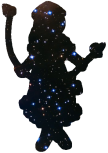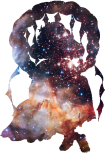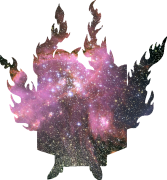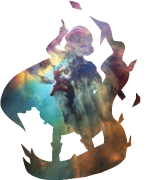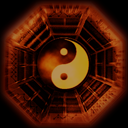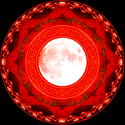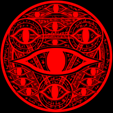Preliminary Research into the Dream Exploration Group
This details that activities of a Japanese group known as Dream Exploration Group. The purpose of this group is - or perhaps was, their current status is unknown - to figure out a way to get into Gensokyo. This pursuit took various forms over the years, from exploring physical locations to more occult means.
It needs to be stated that this is made with the help of AI. Two people who wanted to stay anonymous contributed to this. One of them found and gathered the links relevant to the document presented, and the other one used AI Deep Research function to translate and summarize the findings. This is the first time I publish something that involves the use of AI on this site, and I argue some caution when reading this document. For example, AI apparently wasn't able to capture some nuances, such as the group's activity apparently declining over time, with more and more people simply trolling them. Rather than seeing this as some final, definitive statement about the group, it's a starting point.
As time goes on, the language barrier and in some cases the sheer amount of content has become a serious impediment in figuring out what's going on in the Japanese (and Chinese) side of fandom regarding their more spiritual ventures. There's some highly fascinating things in this document, and beyond these some interesting things about ZUN's influences and the more esoteric aspects of Touhou have been found, waiting translation and analysis. I publish this in hopes that this will inspire someone more fluent to join us in bridging this cultural gap.
- Emissary-
Searching for the Real Gensokyo: Community Investigations and Clues
“Gensokyo” – the mystical Land of Illusion from the Touhou Project games – has inspired a dedicated online community in Japan that is seriously investigating whether Gensokyo could exist in reality and how one might enter it. As fantastical as it sounds, these fans treat the search with earnest rigor. Around 2008–2009, discussion threads titled “Seriously consider how to enter Gensokyo” (真面目に幻想郷に入る方法を考える) sprang up on a Japanese forum (Shitaraba BBS) . Participants shared theories, personal experiences, and folklore, gradually forming a collective “research” effort. Over time, dozens of thread iterations accumulated (the forum is currently on its 29th thread as of 2022 ), prompting members to create a dedicated wiki and archive to organize their findings
The “Musou Tansaku-dan” Wiki and Community
In 2014, enthusiasts founded the Musou Tansaku-dan (“Dream Exploration Group”) wiki to compile all discussion and data . This wiki serves as the central knowledge base for the project. It archives previous forum logs, summarizes theories, and catalogs any “evidence” related to Gensokyo’s possible existence. The tone is serious and methodical: members openly acknowledge that no definitive method or proof has been found yet, but they meticulously document every lead . The wiki’s introduction invites collaboration in “searching for ways to enter Gensokyo” and even jokes that the group’s name is a nod to Touhou’s creator ZUN’s circle (Shanghai Alice Gengakudan) .
The community has also set up image repositories and maps to aid the search. A series of image hosting boards were used to upload photographs, diagrams, and screenshots related to their exploration (labeled “Image Uploader 1st/2nd/3rd”) . These contain pictures from field investigations – for example, snapshots of remote shrines, strange scenery, or alleged visual anomalies. (Some members claimed to have captured “gaps” or rifts in the air on camera, reminiscent of Touhou character Yukari Yakumo’s portals, and shared these images in the forum.) The wiki also links to an interactive Google Map titled “Seriously Examining Gensokyo Entry Points”, plotting real-world locations thought to be potential weak spots in the boundary . This custom map marks sites like isolated shrines, waterfalls, or mountain passes across Japan – any place where the barrier between the ordinary world and a “fantasy land” might be thinnest. (The map’s creator even provided a contact email in its info, indicating openness to outside inquiries.) There is also a public LINE OpenChat group for the project, aptly named “OpenChat for Searching Gensokyo,” which has on the order of 40 members actively discussing and coordinating their research .
Theories on Entering Gensokyo: Methods and Conditions
Over years of discussion, the community has proposed a wide array of theories for how one might cross into Gensokyo (or any hidden “other world”). On the wiki’s page “How to Go to Gensokyo,” they systematically categorize these methods . Below is a summary of the main ideas:
• Physically breaching the Barrier: Gensokyo in Touhou lore is sealed by the Great Hakurei Barrier, separating fantasy from reality. One idea is to locate the barrier itself and force entry. This includes finding “thin” spots where the boundary is weak and attempting to push through . For example, certain remote areas or sacred sites might be part of the Barrier’s perimeter. The community actively discusses visiting such sites (plotted on the Google Map) . Some have even mused about literally breaking the Barrier by replicating immense energy (a clearly far-fetched idea) .
• Using the Hakurei Shrine as a Gateway: In Touhou canon, Gensokyo’s Hakurei Shrine straddles the border – one side in our world, one side in Gensokyo. Fans believe there may be a counterpart “Hakurei Shrine” in our reality. If one can find this shrine and approach with the right mindset, they might slip into Gensokyo’s side. As the wiki describes, someone with the “common sense of the modern world” will only reach the shrine in our world, but someone who has adopted “Gensokyo’s common sense” could arrive at the shrine inside Gensokyo . In practice, this implies identifying a real shrine that could be the model – possibly a small obscure shrine in the mountains – and undergoing some mental or spiritual conditioning to attune to Gensokyo’s reality before visiting
• Altering Consciousness: Another approach is the idea of entering Gensokyo in an altered state of mind, essentially bypassing the barrier by changing one’s perception. The threads noted that being in a hazy, liminal mental state might make it easier to slip through . “Being dead drunk is the easiest,” one summary quips . The rationale is that a dissociated consciousness might perceive supernatural things – so a person might wander into a hidden realm if extremely intoxicated, half asleep, or otherwise not fully grounded in mundane reality. (Of course, the wiki immediately warns this is unreliable; one could just as likely collapse in a ditch with a hangover rather than awaken in Gensokyo!)
• Waiting for a Weak Moment: Some think the Barrier might periodically weaken or open due to certain events or “accidents.” Perhaps during specific cosmic events, on certain festival days, or when nobody is tending a boundary shrine, the separation falters. The group mentions waiting for the Barrier to loosen by accident – though identifying when that occurs is itself a challenge . They reference a Touhou story from Three Fairies (Sanbonbara) about a mystical oak tree that temporarily breached a boundary, as an example of how nature might open a route by chance .
•Transforming Oneself into a “Fantasy Being”: A major theme is that to exist in Gensokyo, one
must belong there. In other words, becoming something considered “fantasy” might allow passage
.
The wiki outlines several long-term strategies:
Become a Living God (現人神): Essentially follow the path of Sanae Kochiya (a Touhou character who is a living god from our world). This would require accumulating faith or performing a divine act. The wiki half-jokingly suggests one might need the resolve to “feed your own flesh to a starving person” to gain miraculous sanctity. In other words, extreme self-sacrifice or saintly deeds could elevate a person to godlike status, making them compatible with Gensokyo’s reality where gods and divine spirits roam. (It notes this is “difficult but safe” compared to riskier methods .
Become a God or Youkai**: Instead of a living human, one could try to literally become a youkai (supernatural creature) or a deity through years of training or rituals. For example, one might study magic to become a magician-type youkai or accomplish a legendary feat so that folklore begins to treat you as superhuman. If one were acknowledged as a mythic being, the Hakurei Barrier might regard them as “fantasy” rather than “reality,” allowing entry . Indeed, one item suggests “becoming a storied great man or wizard, as told in legends” – basically achieving a status worthy of Gensokyo.
Be Forgotten by Society: In Touhou’s lore, things that are forgotten or discarded from the outside world reappear in Gensokyo. Thus, if a person could erase their presence from the collective consciousness, they might “fade” into Gensokyo . Practically, the community acknowledges in modern society this is nearly impossible (our data footprints are everywhere) . Still, one scenario is retreating to a remote place (like living off-grid on a deserted island) so that one’s existence slips from public knowledge . In theory, the Barrier might then treat the person as a lost “fantasy.” (Combining this with becoming a youkai could improve the odds – e.g. a hermit who everyone has forgotten, turning into a myth.)
Ride a “Phantom Train”: An intriguing whimsical idea: use a literal relic of the past. The wiki suggests obtaining a decommissioned train and placing it on an abandoned rail line . “Ride a derelict train on a derelict line, and you might enter [Gensokyo] along with the train”, they propose . This is inspired by Japanese folklore of ghost trains that travel to otherworldly places. In fact, the contributors note you can buy a retired train car for about 300,000 yen, and if you set it on unused tracks in a deserted area and sit in it, perhaps it will spirit you away . (This is half tongue-in-cheek, but it shows how far their brainstorming goes.)
• Offer Yourself as “Food”: In darker fashion, one could intentionally put oneself in danger of being taken by a youkai – essentially using “getting eaten” as a ticket in . For instance, the wiki mentions wandering a notorious place like Aokigahara (the “suicide forest”) or even attempting suicide in a lonely spot, on the theory that either a youkai will find you as prey or your spirit will slip into the beyond . This method is obviously perilous and not encouraged (“you might just end up dead or in the wrong afterlife,” the wiki dryly notes ). It’s listed more as a theoretical possibility than a serious plan.
• Out-of-Body and Spiritual Approaches: Some have turned to astral projection and dreams as means to reach Gensokyo. The idea is that while bringing your physical body might be hard, perhaps one’s spirit or consciousness could travel there. Inducing “yūtai ridatsu” (astral projection) through meditation or near-death experiences is discussed . The consensus is that even if you succeeded, it would be a one-way trip for the soul. The body left behind would likely die or remain comatose, and there’s no guarantee you could integrate into Gensokyo with no physical form . More common are reports of lucid dreams of Gensokyo – some fans claim to have “visited” Gensokyo in dreams, which they treasure as real experiences albeit on another plane. The group acknowledges these as interesting but inconclusive. (They even link to a separate Out-of-Body Experience wiki for techniques, suggesting some members earnestly practice this .)
• Getting Help from Inside: The most straightforward method would be: have someone or something from Gensokyo bring you in. The wiki calls this “being let in by someone” . For example, “ask a god to use their power” to take you across . If one devoutly prays to a deity (perhaps one connected to Gensokyo’s mythology) and gains their favor, the god might grant a miracle. Another possibility: Yukari Yakumo’s gaps. Yukari, being the youkai of boundaries in Touhou, can physically pull people into Gensokyo via her famous “gap” portals. The problem is one cannot control Yukari’s appearance – “the chance of encountering a gap is extremely low” and you’d somehow need to attract Yukari’s interest so that she targets you . Some have speculated that doing something notable (either impressively insightful or disturbingly problematic) about Gensokyo might catch Yukari’s attention – but this is all guesswork. Finally, finding a person who already “entered Gensokyo” and persuading them to guide you is listed as an option . Over the years a few individuals have claimed online that they made it to Gensokyo (so-called “jishō gensōiri-sha”, self proclaimed Gensokyo entrants). If one of them were genuine and willing to help, they could show the way. However, as the wiki wryly notes, purported entrants are rare and often turn out to be hoaxes or uncooperative even if real . Still, “if by chance one is real, they’d be extremely reliable,” the page concludes .
• Via Other Realms (Backdoors): This is a speculative category where one might reach Gensokyo through another supernatural realm adjacent to it . For instance, one suggestion is “if you die, become a spirit in Higan or the Netherworld, and then find a way into Gensokyo’s afterlife realms” . Touhou’s cosmology has places like Muenzuka, Higan (the Sanzu River), and the Netherworld which connect to Gensokyo. In theory, a newly deceased soul could petition the Yama (Enma) to send them to Gensokyo’s cycle. But again, it’s uncertain – you might be reborn elsewhere or not at all. Another idea is finding a portal in remote mountains that leads to any otherworld, then transitioning from that world into Gensokyo. Japan is rich in folklore about “kamikakushi” (spiriting away) and hidden villages; perhaps one of those leads to a realm contiguous with Gensokyo. The risk, of course, is you might end up in some completely unrelated alien world and never return .
Despite the sometimes tongue-in-cheek tone, these exhaustive proposals show how deeply the community has analyzed “Gensokyo entry” from every angle – physical, spiritual, mythological, and psychological. And while no one claims to have a confirmed method, the group continues refining these ideas as “work in progress” . As one commenter summarized, “No truly reliable, surefire method has been established yet” – but they persist in exploring all possibilities.
Clues in the Real World: Strange Locations and Map of “Entrances”
The search for Gensokyo isn’t confined to theory. The community has also scoured real-world geography
and folklore for tangible clues of a hidden land. Over time they identified various “suspicious” locations
in Japan that feel like pieces of Gensokyo, and plotted these on their collaborative Google Map . Many
of these places are secluded mountain shrines, remote forests, or sites of local legends.
For example:
• Kinasa Shrine with Carved Names: In Nagano, a participant visited Kinasa’s Shirahige Jinja, a mountainside shrine, and noticed an unusual detail: the name Moriya Masaki inscribed on a pillar . Moriya is the surname of a deity family in Suwa myth and also of key characters (Kanako and Suwako) in Touhou’s Moriya Shrine. The excited finder wondered if this was a hint connecting Touhou’s Moriya Shrine to a real-world Moriya lineage. It was as if the fantasy Moriya Shrine had a footprint in our world – perhaps indicating a nexus point between worlds at that shrine. (At the very least, it showed Touhou’s use of real names: the Moriya are an actual clan from Suwa. But for these searchers, it felt like uncovering an Easter egg left by reality itself.)
• The “Gap” in the Sky: Some community members claim to have seen or captured on video a phenomenon that looks like Yukari’s gap – essentially a strange tear or distortion in mid-air. On the forum, users referenced two YouTube videos where a fleeting slit-like anomaly was caught on camera . They freeze-framed what appears to be an oblong distortion or flicker, jokingly calling it “Yukari’s gap”. While skeptics could attribute it to lens flare or video glitches, it caused a stir. Could it have been a genuine portal momentarily opening? The idea that photographic evidence of a barrier opening might exist is tantalizing, and such videos are hotly debated in their discussions. (At least one user posted a still image from a video to the image uploader, highlighting a pale ellipse floating among clouds – it certainly looks eerie, but without context it’s inconclusive.)
• Mystery Spot: A Shrine with No Torii: One contributor bicycling at 2 AM through the countryside stumbled on a tiny roadside shrine that gave him “a strange feeling”. He reported that the shrine had no torii gate (nearly all Shinto shrines have a torii) and its offertory box was oddly offset to the side . Even more bizarre: an old incandescent lantern on the grounds glowed without attracting any insects at all, despite it being a summer night . The air around felt unnaturally still and cold. He paid his respects and left, but later wondered if he’d encountered some minor boundary point or out-of-place shrine. Others noted there is a famous real shrine (Tsuki Shrine in Saitama) that intentionally has no torii , and that shrines sometimes offset objects to leave the center path open for gods . The lack of bugs could just be the late hour. In short, nothing conclusively paranormal – yet the experience of “a shrine that felt like it didn’t belong” remains in the catalog of possible leads.
• Waterfall of Healing and a Dream: A user in 2010 shared a vivid dream: in the dream he visited a waterfall surrounded by red maple leaves, said to miraculously heal injuries (especially a blind eye) . At the waterfall, a mysterious woman greeted him – he felt she might have been Yukari Yakumo in disguise . This individual often had semi-prophetic dreams, so he posted it in case it was a clue. Amazingly, another forum member did some research and found a real waterfall in Saga Prefecture called “Kannon Falls” that perfectly matched the dream: it’s famed for curing eye diseases, has beautiful autumn maple foliage, and is of modest size just as described . The excitement was palpable: here was a specific location with mythic properties – perhaps a spot where one could meet Yukari or cross over. The forum buzzed with plans to check out Kannon Falls. “If we find that waterfall and go there, maybe we can meet Yukari,” one user speculated . While it remains just a theory, the fact a dream led to a real-world holy site gave the community a hopeful boost. (At minimum, it’s a reminder of how Touhou’s fantasy draws from real Japanese locales. The Saga waterfall’s healing legend could well have inspired similar motifs in the series.)
• A “Hidden Village” in Tohoku: One of the most compelling stories came not from the core online group but from a personal blog of a fan who actively searched remote mountains with a drone. In a 2020 post titled “Story I heard from an old man living deep in the mountains – Is Gensokyo real…?”, the blogger (username Kuramai) recounts an encounter he had as a teenager with an elderly hunter in the Tohoku region . This old local shared a childhood memory from the post-war years: while exploring a familiar mountain, 9-year-old him wandered off trail and noticed the atmosphere changing – the sights, smells, and sounds became unfamiliar . He realized he had strayed into an area “not on any map”. Trying to regain bearings, he followed a stream and unexpectedly came upon a small settlement or village in a clearing . He’d never seen this settlement before, despite knowing the mountain. Approaching, he then saw something truly frightening: a “yōkai” – a black humanoid creature with inordinately long limbs – lurking at the edge of the village . It noticed him and began to move toward him, smiling widely. The boy was paralyzed with fear as it came closer, certain he would be eaten . At the last moment, his father (who had been searching) somehow pulled him back – and suddenly the boy found himself “back” in the regular forest. The old man swore his story was true, describing the creature in detail. He told Kuramai: Japan has long been called a land of yōkai; overlapping dimensions exist in the wilds. I think an ideal world like Gensokyo might really exist, even if Gensokyo itself is fiction . This testimony left a deep impression. Here was an eyewitness account from decades ago that mirrors the idea of stumbling into Gensokyo: a hidden village, a youkai encounter, and an escape. For the community, it’s one of the most convincing pieces of oral evidence that “something like Gensokyo is out there in the mountains” . It lends credence to the notion that certain remote places in Japan could indeed house gateways to “fantasy realms” – be they Gensokyo or similar otherworlds. (Notably, this hunter’s tale is strikingly similar to many old Japanese folktales about people wandering into mysterious villages and meeting non-humans, reinforcing that Touhou’s setting is rooted in cultural motifs that some believe have kernels of truth.)
• ZUN’s Hometown and Local Legends: Early on, some fans hypothesized that Touhou creator ZUN might have based Gensokyo’s location on his own hometown. ZUN (real name Jun’ya Ota) was born in Hakuba Village, Nagano – a rural area in the Japanese Alps . Nagano is rich in folklore (near Suwa Lake, etc.) and has many Touhou-relevant sites (Suwako Moriya is based on the Suwa deity, for example). A blog on Livedoor in 2019 noted the curious density of Touhou references to Nagano’s culture. This led to a theory that “Nagano might be the ‘Outside World’ location of Gensokyo’s entry” essentially that if Gensokyo were real, it could lie in the mountains around ZUN’s childhood environs. However, this theory met some friendly skepticism. In fact, one self-proclaimed insider on the forum explicitly stated: “ZUN himself said that Gensokyo is not in Nagano” . According to this insider (whom we’ll detail shortly), Gensokyo’s model region is elsewhere – he suggests ZUN included bits of Nagano lore in Touhou (e.g. for the Moriya Shrine in Mountain of Faith), but the actual “Land of Illusion” corresponds to a different region of Japan . This shows that while the community leaves no stone unturned – even examining the creator’s background for hints – the consensus has shifted toward other locales as better fits for Gensokyo’s real counterpart.
Testimonies of “Those Who Were There”
Perhaps the most fascinating (and controversial) aspect of the project is the collection of testimonies from
individuals who claim to have entered or lived in Gensokyo. The Musou Tansaku-dan wiki has a page
titled “Fantasy People Registry” which compiles such accounts . These range from anonymous forum
posts of personal experiences to repeat contributors who became quasi-legendary in the community.
While any such claims are taken with a grain of salt, the group analyzes them seriously for any insights or
consistent threads.
A few highlights:
• The Despairing Young Man (Eientei Visit): In 2009, a user calling himself “Link’s Person” posted a disturbing but intriguing story . Suffering severe depression, he attempted suicide by poison. While clinically dead or unconscious, he experienced being in Gensokyo – specifically Eientei (the mansion of the moon doctor Eirin and princess Kaguya) . To him, it felt as though he spent one full year living in Eientei before he was resuscitated in reality . After recovering, he found he had lingering “aftereffects”: he would hear things (possibly hallucinations) and have strange phenomena around him, almost as if part of him hadn’t fully left Gensokyo . Most remarkably, he claimed that by concentrating on character merchandise (like a strap of a Touhou character) and strongly wishing, he could temporarily communicate telepathically with “them” back in Gensokyo . He admitted it sounded crazy – he himself said “it must have been a delusion” – and he urged others not to attempt suicide just to try to reach Gensokyo . The community’s take: his experience is anecdotal evidence that near-death states might allow entry, but at obvious great risk. It also touches on a common theme: time dilation. He perceived a year passing in Gensokyo, yet in reality his crisis lasted maybe hours – suggesting time flows differently across the boundary (a consistent trope in many other tales).
•The Former Resident (10 Years in Gensokyo): Shortly after, another poster under the handle “元住 民” (“Former Resident”) responded, saying “I’ve kept quiet because everyone would dismiss it as a dream, but I have a similar memory” . He recounted that as a teenager around 2002, he got lost in a forest and suddenly found himself in Gensokyo . Astonishingly, he claims he lived 10 years there among the humans and youkai. According to him, he arrived just before the events of Embodiment of Scarlet Devil (the Scarlet Mist Incident) and managed to stay until around the time of Mountain of Faith . “I was there up through the incident in 風神録 (MoF),” he wrote, matter-of-factly . Eventually, he says “Yukari-san sent me back to the outside for my own safety”, implying Yukari judged it was time for him to leave . When he returned, no time had passed – he was back in 2002 in his original body as if nothing happened, except with a decade of vivid memories . The striking part of his testimony is that his Gensokyo memories begin in May 2002 – months before Touhou’s creator released the game that corresponds to what he experienced . At the time, Touhou 6: Embodiment of Scarlet Devil hadn’t yet come out. This leads him (and anyone reading) to wonder: what if Touhou’s stories aren’t “just made up” but have some truth? He felt strongly that his experiences were too coherent to be a mere dream or personal fantasy, especially given the timing . In his post, this “former resident” expresses a deep nostalgia and longing: he misses the friends he made on Youkai Mountain, and he’s anxious that he might never see them again . He even pleads with the first user (the one who can communicate via thoughts) to ask about the well being of certain characters on his behalf . The community cherishes this account for its detail and the emotional weight behind it. If true, it suggests some people may be “spirited away” to Gensokyo for years and returned, with Touhou Project perhaps being a creative echo of those real events. Real or not, it’s essentially a modern “folklore” piece aligning perfectly with Gensokyo’s concept (in Gensokyo, humans from outside occasionally wander in and usually are sent back after a while). The story also underscores the time anomaly aspect: 10 years inside vs 0 years outside, a consistent property of Gensokyo in fan theories.
•The Prophecy of the Ox (The Long Post Guy): Among the notable forum personalities was someone nicknamed “長文厨” (Long-Post Guy), who would drop in infrequently with massive info-dumps . In one appearance around 2014, he cryptically mentioned a “prophecy book” about Gensokyo and hinted that there was a time limit for finding it: “the deadline is the Ox’s Autumn – the next Year of the Ox (2021)” . He didn’t fully explain why that date, just that “if not found by then, something about ‘kaso’ (depopulation?) might come true”. This was extremely cryptic, but some interpreted that perhaps he foresaw the forum dying out by 2021 if no breakthrough occurred. (Indeed, interest did wane a bit by late 2010s, though the threads and wiki are still alive.) Long-Post Guy also implied that “anyone can find it if they try hard enough,” suggesting the clues are out there in open sources for those who look . His posts read almost like riddles from a sage inside Gensokyo. The community actually tried to parse his hints and even searched for an actual book that might fit the “prophecy” description, though nothing concrete surfaced. Nonetheless, his contributions added to the mystique and gave a motivational target (“find it by 2021!”)
•The “Insider” from Tohoku: Perhaps the most revelatory claimant was an individual who posted in 2010 under the moniker “自称幻想郷の人” (“Self-proclaimed person from Gensokyo”) . He introduced himself by expressing surprise that people outside actually want to enter, and after reading the forum’s summary he decided to share information . According to him, he physically entered Gensokyo around 2001 (nine years before Touhou’s EoSD) through a certain “entrance”, and ended up living at the Hakurei Shrine as a guest for many years . He claims to have been present in Gensokyo during the events of Touhou 6 through Touhou 12 (EOSD through UFO) – fighting alongside Reimu and Marisa during those incidents . By 2010 he had returned to the outside world but retained some abilities (he mentions he still has his spiritual “powers,” albeit weakened outside and that he left his spell cards behind when returning) . Naturally, this sounded fantastical, but what made this person stand out was the specific lore and locations he revealed. He effectively dropped a bombshell: “Gensokyo does not ‘exist’ as a literal separate plane, but there is a real-world region that inspired it – and it’s in the Tōhoku area (northeastern Japan)” . He went on to give explicit hints: “It’s either Iwate or Akita prefecture. There’s a place up there with a legend of a dragon – Gensokyo’s supreme deity is a dragon, remember” . This correlates with the Touhou backstory of the Dragon God. Indeed, Akita and Iwate share a border near Lake Hachirōgata (in Akita) which has the legend of Hachirōtarō, a lake serpent dragon . He gave more: “There’s an Akita Suwa Shrine that worships the same god as Nagano’s Suwa (Kanako/Yasaka deity). Near it is a forest literally called Tengu Forest and a lake” . Strikingly, he described a sunflower field in Akita – “a place where each year from spring to summer the flowers bloom profusely” – implying it’s analogous to Yūka Kazami’s famous sunflower field in Gensokyo .
All these clues pointed to specific locations in Akita: there is indeed an Akita Suwa Shrine (also known as Suwa-miya) near the Oga Peninsula, and Akita’s Ogata Village on former Lake Hachirōgata is known for vast sunflower fields. He then essentially confirmed: “One of those two prefectures is Gensokyo” , and “the model land exists, though Gensokyo as such is a fabrication” . Furthermore, he shared a family anecdote: his grandmother in Iwate used to play with a certain gap youkai and a flower youkai when she was young . According to grandma, “long ago, before Lake Hachirōgata was drained, the gap youkai (Yukari) came and made that area a safe haven for youkai. A lady with a parasol (clearly Yūka the flower youkai) often visited” . In other words, Yukari and Yūka might have real counterparts or origins in Tōhoku, and they helped establish a youkai enclave there around the late 19th early 20th century (Hachirōgata was drained in the 1950s). This insider even teased that he could provide more answers – he asked if a certain person who once mentioned living at Eientei was reading, because “depending on his answer I might reveal the entrance I used and more” . Unfortunately, if any further info was given, it isn’t publicly archived – perhaps he moved to private conversation or the thread ended. Still, his postings were treated like gold by the community. He essentially corroborated many earlier suppositions (that youkai activity centers on places with strong folklore, that Nagano was a red herring and Tōhoku is key) and gave new leads aligning Gensokyo’s map to real geography (e.g. comparing Gensokyo’s Garden of the Sun to the sunflower f ields of Akita) . The idea that “Gensokyo” might actually be an area in northern Japan – not a separate dimension but a hidden enclave within our world – is now a favored theory. It suggests an approach of physically exploring remote Tōhoku regions for evidence, rather than trying metaphysical tricks. Notably, some of the community’s field trips in recent years have focused on Akita’s mountains and lakes, following this guidance.
These testimonies, while unverified, are taken seriously as if true by the Musou Tansaku-dan. They treat them as valuable firsthand “data.” The wiki’s Fantasy People Registry highlights such accounts and encourages deeper analysis of unresolved details . The underlying attitude is: even if a story was a hoax or fiction, if it contains consistent details or useful hints, it can inspire real avenues of research. And if even one of them is genuine, then Gensokyo (or something like it) truly exists.
Bridging Legend and Reality
One charming result of this research is how it sheds light on the interplay between Touhou’s fantasy and real Japanese legend. A prime example is Sendai Shirō. Sendai Shirō was an actual person in the late 19th century – a simple-minded man in Sendai who became regarded as a “living good-luck god” for businesses. He is a famous local folk figure (his photo is often hung in shops for luck) . Touhou’s official manga Wild and Horned Hermit slyly included Sendai Shirō in a chapter – essentially bringing a real-world myth into Gensokyo’s context as a cameo . Fans on a blog noted that “Sendai Shirō, a real person known as a god of fortune, actually appeared in Touhou’s Forbidden Scrollery Vol.2”, tying the outside world to Gensokyo’s world . In Touhou’s lore, characters like Sanae (a living god) parallel people like Sendai Shirō– humans who become quasi-divine through belief. The community found this fascinating: it’s as if the boundary between reality and fantasy is porous in both directions. Just as they search for evidence of Gensokyo in our world, Touhou’s creators insert real legends into Gensokyo. Sendai Shirō’s inclusion implies that people who attain legendary status here might “pass into fantasy” after death – exactly the kind of 89 phenomenon that would create a Gensokyo. This concept of “Fantasy Nature” (幻想入り – entering fantasy) drives their conviction that Gensokyo is not merely fiction but an amplified mirror of our own cultural collective imagination. If enough people believe in something, perhaps it literally takes form behind the Barrier. Sendai Shirō’s story, being documented and believed by many, might have given him an existence on the other side. Such musings reinforce the group’s seriousness: they are essentially testing the boundaries of folklore and reality.
On a more scientific note, some members even looked into parapsychology research for clues. They discovered the Japanese Society for Parapsychology (JSPP) and were amused to learn the CIA had once taken interest in it. In a declassified review titled “Parapsychology in Japan,” the CIA summarized Japan’s academic ESP and psychokinesis research, mentioning JSPP’s work since WWII . While this doesn’t directly relate to Gensokyo, it legitimized the idea that even government agencies have explored “unknown realms” of a sort. It added an air of credibility – if mainstream science has room (however small) for studying mysterious phenomena, then fans chasing a fantasy realm isn’t completely beyond the pale. The community sometimes references this to justify their project as a kind of “fun fringe science” or modern folklore study. In any case, the JSPP example shows that interest in unseen worlds isn’t confined to hobbyists; it spans from pop culture to governmental research, albeit in different forms.
Continuing the Quest
After years of investigation, the Musou Tansaku-dan hasn’t literally broken through to Gensokyo – no one has stepped forward with physical proof like a souvenir from the Hakurei Shrine or a selfie with Reimu. But the project remains active and evolving. Their online threads still periodically spark with new ideas, and the wiki is updated as recently as 2022 . They approach the topic with a balance of open-mindedness and critical analysis, treating every legend or claim with “serious consideration, but not blind belief.” As one comment noted, the priority now is enriching the knowledge base – especially the “How to enter Gensokyo” methods and the catalog of claimants – while avoiding unfounded changes . In other words, they strive to keep the information factual (within the context of Touhou’s framework) and weed out obvious trolls or “noise.”
Members also acknowledge the possibility that if Gensokyo exists, it might not be something you can force your way into on demand. It could require a mix of destiny, spiritual alignment, and perhaps sheer luck. As the wiki quips under the “let someone bring you” section: “This way you don’t need to find the Barrier yourself, but it requires even more luck than anything else.” . Nonetheless, their efforts have not been in vain. Along the way they have deepened their understanding of folklore, geography, and Shinto/occult practices, essentially turning a fandom pursuit into a genuine interdisciplinary study. They’ve documented obscure myths from all over Japan, from the Tengu legends of Iwate to the dragon of Akita to the hidden Christian relics of Nagano (another theory proposed that Gensokyo’s “Hakurei Barrier” concept might draw on Kirishitan hidden villages – yet another layer to investigate). The project has even inspired some to take up traditional spirituality; a few participants began learning meditation, Shinto rituals, or onmyōdō, treating it as training that might one day attune them to the supernatural.
Perhaps fittingly, the search for Gensokyo has become its own kind of Gensokyo. The community formed around this quest is a tight-knit little world of illusions and reality blending together. They often say that even if they never physically reach the “real” Gensokyo, the friendships and adventures born from trying are a reward in themselves – a slice of Gensokyo in spirit.
As of 2025, the consensus among them is that something like Gensokyo could exist, most likely nestled in the remote reaches of Japan’s mountains (with northeastern Japan being the prime candidate). They continue to plan pilgrimages to whisper-quiet shrines and organize “offline meetings” to swap notes. Each spring, when cherry blossoms bloom in lonely mountain valleys and mist gathers at dusk, some hearts in the group beat a little faster – could this be the moment the Boundary thins and the path to Hakurei Shrine appears? They don’t know, but they believe it’s worth being there just in case. As the old hunter told Kuramai: “Japan is a land where all kinds of dimensions overlap… The Gensokyo of stories may be fictional, but something close to that ideal world surely exists.”
And so the “Gensokyo explorers” press on, treating Touhou’s lore as a series of clues and treating ancient myths as actual maps. Their journey blurs fiction and reality in a way that would make Yukari Yakumo proud– after all, Yukari is said to thrive in the boundary between dreams and truth. Perhaps it’s in that very boundary that the key to Gensokyo lies. Until they find it, the Musou Tansaku-dan will keep cataloguing every gap, every ghostly village tale, and every method the human imagination can conceive for reaching that enchanted haven beyond the Hakurei Barrier. The dream of stepping through that boundary – of hearing distant festival music and seeing the Youkai Mountain on the horizon – is alive and well, carried in the hearts of those 40-odd open-chat friends and their many silent followers online. In a sense, their belief gives Gensokyo life, exactly as ZUN’s lore would predict. Whether Gensokyo “exists” or not, they are making it exist – in stories, in camaraderie, and in a shared serious fantasy that feels a little more real with each passing year.
Sources & Original Document
Below are the sources used in the Deep Research process. You can also download the original document which has numbered references to specifics sections of the Musou Tansaku-dan wiki.
Download the original document here.
Sources:
1. https://w.atwiki.jp/gennsoukyou/: The main site, used for archiving their previously threads, and other projects.
2. https://www.google.com/maps/d/viewer?mid=19wex7cj3ulLVeJHO7KqsS0087qM&ie=UTF&msa=0&ll=35.35327683750693%2C140.28409014397198&z=7: A google maps document of various shrines that the author felt were weird. It also is notably for having 500,000 views. The details of the site list a email that could possibly be contacted.
3. https://natsuinm.livedoor.blog/archives/17939440.html: A site discussing the CD's and the theory of Zun's home town being the entrance to Gensokyo.
4. http://furcas.blog39.fc2.com/blog-entry-84.html A site that explores lore related to Yukari, comparing her to Venus, Lucifer etc.
5. https://j-spp.umin.jp/english/jspp_e.htm: A CIA document the group was fascinated with.
6. http://jubilant1984.blog.fc2.com/blog-entry-5594.html: The legend of Sendai Shiro.
7. https://www.kyodemo.net/sdemo/r/s_computer_41116/1415531083/?vp: Discussion about the "Gap in the Sky" case. Note: most likely an artefact of early digital cameras.
8. http://mazimenigensokyo.blog.fc2.com/blog-entry-4.html: The way the person who collated the links found the forum, cross-posted to "Japanese neocities" as he called it.
9. https://gennsoukyosagasiclmai.blog.jp/archives/7386412.html: An attempt at finding Gensokyo using a drone. The source of the incident where an older man told his experience of getting spirited away.
10. blog.fc2.com: "Basically Japanese Neocities". Keywords are important there, in this case 幻想郷 実在
The #全日本もう幻想入りしたい協会 hashtag on Twitter, "All Japan I Want to Enter Gensokyou Association". Likely just an aesthetic trend, but people post photos of "Gensokyo-like" places and have an interest in mythology related to Gensokyo.
